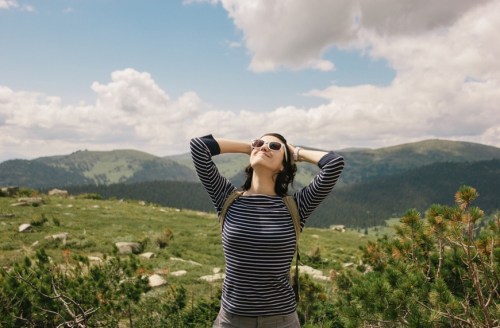Mental-health issues are becoming less stigmatized and easier to talk about by the day, especially with celebs getting real about their personal struggles. Still, articulating the experience of having conditions like depression or anxiety can seem confusing or even impossible, so larger scale conversations about defining, then researching and treating them can likewise suffer. A product of this plagues panic disorders, a condition that the Anxiety and Depression Association of America reports effects 2 to 3 percent of the national population each year, despite many of these people not even knowing what they’re battling is treatable.
Both anxiety and panic attacks can feel like having a heart attack, says therapist and social worker Scott Dehorty, executive director of a mental-health treatment facility: They can bring about dizziness, loss of balance, increased heart rate, nausea, chest discomfort or pain, choking sensation, and sweating. If you find yourself experiencing this scary laundry list of no-fun symptoms, you’ve likely been told (maybe even by yourself!) to try to calm down and take deep breaths. But that might not be the only course of action.
Psychologist and Mindsail expert Carder Stout, PhD, says the best breathing technique during these attacks is to “take medium, regulated breaths, inhaling through your nose and exhaling with your mouth” since both deep and shallow breaths pose their own issues. Deep breaths have been thought to exacerbate the problem by elongating the hyperventilation that commonly occurs during an attack. Alternatively, Dr. Stout says breathing too shallowly “can cause a feeling of suffocation and increase the levels of terror.” In addition to taking medium measured breaths, he says it can be helpful to imagine “that you are breathing in love and blowing out negative energy.”
“Remember, anxiety is energy, and it can flow out of the body and mind just a quickly as it arrives.” —Dr. Carder Stout
If you do want to try a breathing exercise to combat anxiety, here’s the best way to do it, according to Dr. Stout:
1. Take a medium-sized breath in, inhaling through your nose.
2. Hold the breath in for five seconds; it shouldn’t feel difficult to hold your breath this long, the way holding it to a count of eight to ten might.
3. Release the breath through your mouth, counting to five as you do so.
4. Repeat this exercise, taking measured breaths, until you feel your anxiety subside.
What to try if measured breathing doesn’t work for you:
Your breath might not be the only function to focus on in order to quell a panic attack; in fact, Dr. Stout contends the best thing you can do is actually irrelevant to breathing. Rather, he suggests addressing your body’s need to calm down by “taking off your shoes and socks and getting your feet in the dirt.” This is not a metaphor, folks—Dr. Stout heavily advocates this practice, AKA grounding.
To have a grounding sesh, find a patch of nature (grass, dirt, sand, etc.), and really get your feet in there. What comes next is all about mindfulness: “Imagine that all of the harmful, negative, anxious energy is flowing through your body and into the earth,” Dr. Stout says. Then, “imagine that all of the nutrients, minerals, vitamins, and positive energy is now flowing from the earth back into your body.”
If you can’t bury your feet in literal dirt when panic strikes, Dr. Stout says to excuse yourself from whatever situation you’re in—whether that’s work or a social gathering—and find a quiet place to recover. While there, close your eyes for a moment and conjure a place you’ve been that’s relaxing, safe, and calming to you. Once you’re mentally in this space, he instructs to then visualize yourself grounding. “Remember, anxiety is energy, and it can flow out of the body and mind just a quickly as it arrives.” Below, are the steps for trying a grounding practice:
1. If you’re in a place where you are able to—and the weather permits—take off your socks and shoes.
2. Feel the ground with your feet, meditating on how it feels and smells.
3. Imagine all your anxiety leaving your body, down through your feet and flowing into the earth. Think of all the rich nutrients in the grass, dirt, and soil at your feet and the positive energy being washed over you.
4. Meditate on that positive energy, straight from the earth, flowing through your body.
5. When you’re ready, put your socks and shoes back on, but try to carry the feeling of this grounding moment with you as you move through the day.
Although anxiety and panic attacks can be terrifying, learning coping mechanisms can help you feel more prepared and in control when they strike. Just consider it a bonus when those tools happen to involve restorative, mindful exercises you can practice at any time.
Originally posted April 16, 2018. Updated November 6, 2018.
Since being in nature can also improve body positivity, try one of these nature-inspired paint hues in your home.
Sign Up for Our Daily Newsletter
Get all the latest in wellness, trends, food, fitness, beauty, and more delivered right to your inbox.
Got it, you've been added to our email list.











